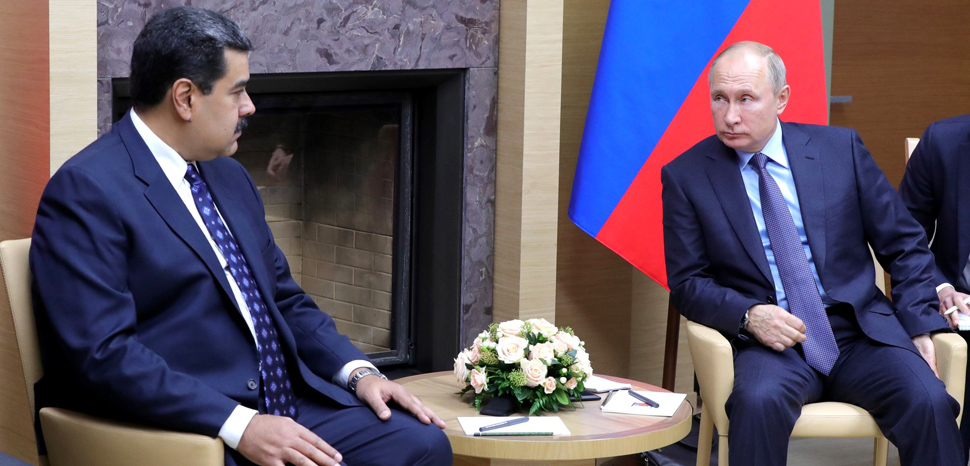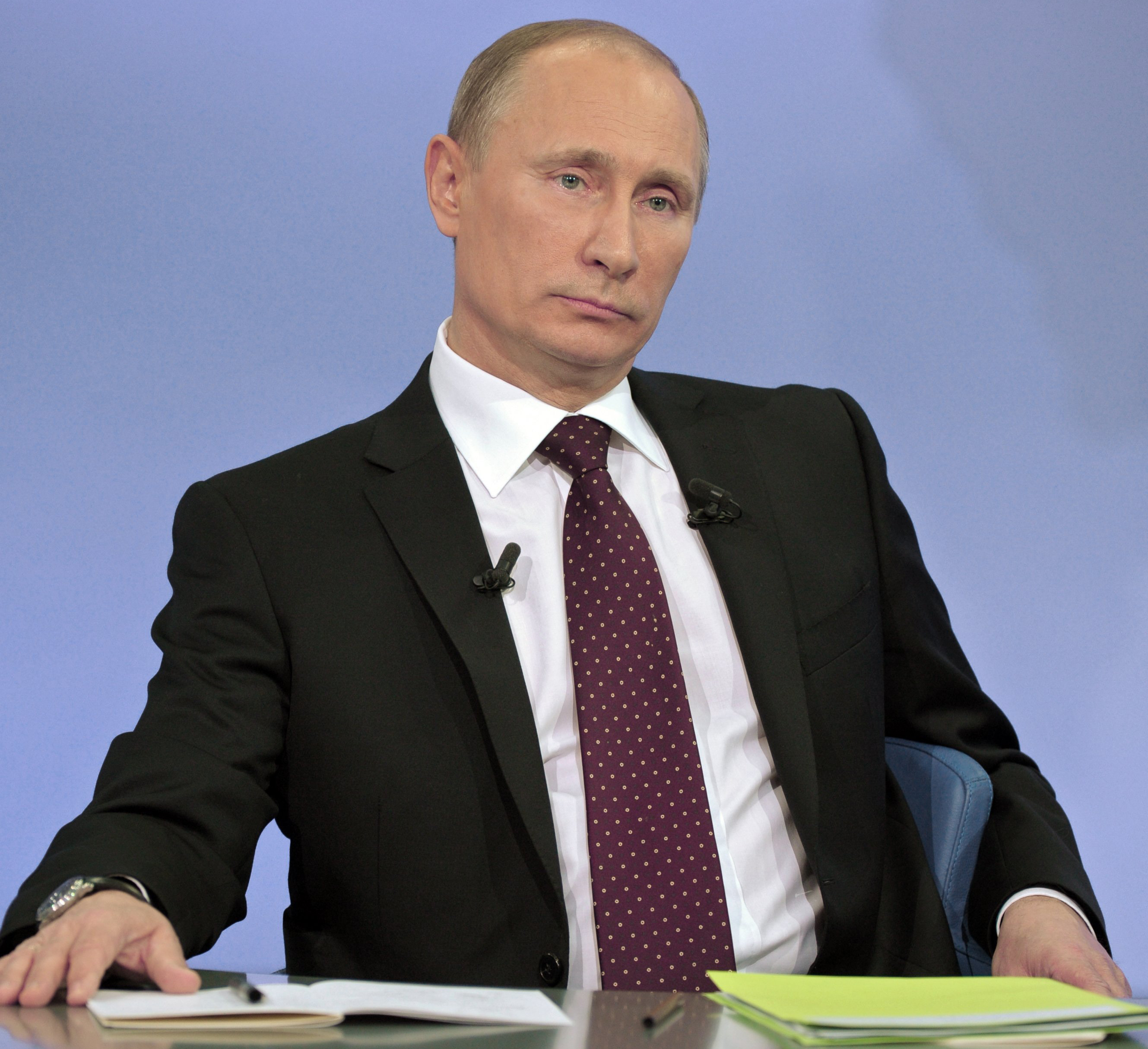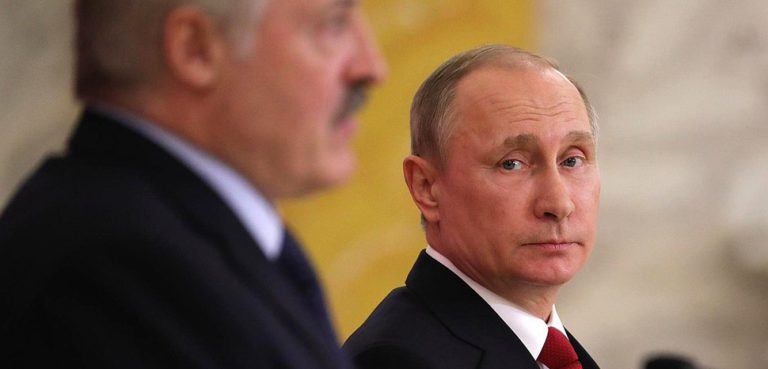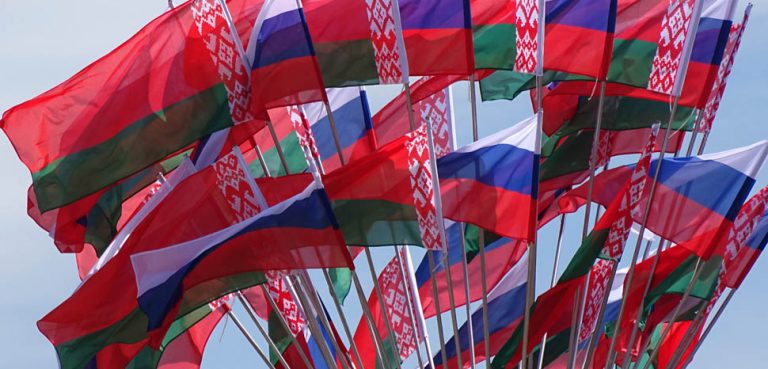As a great power that has risen from the ashes of the former Soviet Union, Russia has gone to great lengths to restore its geopolitical hegemony in the post-Soviet space in order to rollback Western influence, enhance its national security, overturn a correlation of forces regarded as detrimental, and rewrite European security architecture to fulfil its strategic imperatives. The outright invasion of Ukraine is merely the latest ‒ and certainly the most ruthless ‒ evidence of such determined pursuit. However, in a bid to reassert its status as a force to be reckoned with on a global scale, Moscow has also strengthened its position beyond its immediate periphery. In fact, Russian vectors of influence can be seen even in the American hemisphere, far from its natural Lebensraum. This development challenges the core idea of the Monroe Doctrine: the conception of the American hemisphere as Washington’s exclusive sphere of influence. It must be borne in mind that, according to the theoretical views of Nicholas Spykman, the geopolitical perimeter of American national security goes from Alaska and Greenland to Colombia, an area that encompasses Canada, Mexico, the Central American isthmus and the Caribbean Basin.
Nevertheless, the Russian presence in the American hemisphere is hardly new. The Russians conquered Alaska through settlements, mercantile outposts, religious proselytizing and even force. Such interest was motivated by the profits offered by the thriving fur trade. Furthermore, in the context of the American Civil War, the Russian Empire diplomatically backed the Union and even dispatched warships to strategic American ports to deter a direct military intervention by either Britain or France ‒ rivals with which Russia had scores to settle after the Crimean War ‒ in favor of the Confederacy, the side that London and Paris were inclined to support. Shortly after the fateful Northern victory, Alaska was sold to the US because the costs of keeping it had become higher to the benefits. The Russians expected that the absorption of Alaska by the Americans would weaken the position of the British in Canada’s Eastern seaboard. In turn, Washington wanted Alaska as gateway to Asia and as a spearhead of American sea power in the Pacific.
During the Cold War, the Soviet attempt to position ballistic missiles in Cuba ‒ which had joined the socialist bloc under the revolutionary regime of Fidel Castro ‒ triggered a major crisis that nearly ignited a nuclear confrontation between the world’s top superpowers. The operational presence of Soviet nukes in the Caribbean nation would have been deeply problematic for Washington because it would have threatened the mouth of the Mississippi River, the heartland of the US oil industry and a substantial portion of the East Coast. In the 1980s, the Kremlin supported left-wing forces in the civil wars that erupted in Central America. In response, the CIA and the Pentagon sponsored right-wing paramilitary squads. Furthermore, through its constellation of ‘rezidenturas,’ the KGB was active in the region in the fields of espionage, political intrigues, the recruitment of assets, ideological agitation, covert operations, the encouragement of subversion, and all sorts of cloak-and-dagger schemes.
After the collapse of the USSR, Russian influence largely vanished from the American hemisphere. Nevertheless, there were four turning points that created a window of opportunity for the Russians to return. First, the excessive concentration of the US foreign policy agenda in the first two decades of the 21st century on the Middle East, Central Asia and the Indo-Pacific left a power void that could be harnessed by both local and external players. After all, the law of capillarity dictates that nature abhors vacuums. For the Kremlin, it would have been unwise not to take advantage of this neglect. Second, the rise of left-wing authoritarian governments ‒ empowered by the accumulation of popular discontent, resentment and disenfranchisement ‒ whose nationalist policies targeted US interests generated a favorable political atmosphere. The adoption of militant ‘anti-imperialist struggle’ by the most hardline members of this emerging ‘Bolivarian axis’ prompted the need to seek the support of a foreign backer whose assistance could help mitigate some of the most direct impacts of Washington’s predictable reprisals.
Additionally, US involvement in the so-called “color revolutions” in the former Soviet Union and the eastward expansion of NATO elicited a backlash from Moscow, just as realist thinkers (e.g. George Kennan, Henry Kissinger, Kenneth Waltz and John Mearsheimer) had forewarned. As a countermeasure, the Kremlin decided to increase its geopolitical presence in the American hemisphere. After all, for the Bolivarian states, Russia was a suitable candidate that had the means and the motives to offer the kind of patronage they needed as well as a source of economic benefits that could compensate their restricted access to trade and funding. Plus, the Kremlin would not lecture them about liberal democracy, free markets, or transparency. Nevertheless, this move ‒ rather than being driven by ideological underpinnings ‒ responds to calculations of statecraft inspired by realpolitik.
The fourth major factor has been the growing Chinese geoeconomic presence in the region through investments in strategic sectors, business operations, trade partnerships, joint ventures, lines of credit, technological assistance, and infrastructure projects. From the Russian viewpoint, this effort illustrated that Washington’s position in its own backyard was not as strong as it once seemed. Accordingly, Latin America could perhaps bring opportunities for the Kremlin as well. In this regard, the following sections scrutinize the engagement of Russia with key Latin American states.
Cuba
Cuba, once a Soviet satellite, suddenly found itself deprived of generous Soviet subsidies and geopolitical patronage after the collapse of the Soviet Union. Havana had no choice but to implement mild economic reforms, court like-minded Latin American allies, and try to normalize bilateral diplomatic relations with Washington. However, in order to diversify its partnerships, Cuba has welcomed Chinese and Russian interests. From Havana’s perspective, securing the support of both is crucial to deal with external and internal phenomena which might reach dangerous proportions or unleash upheaval. Although Beijing is wealthier than Moscow, the latter is much more familiar with Cuba thanks to the closeness that was fostered for decades during the Cold War. Back then, Cuban students were educated in Soviet universities, the Russian language was widely taught in Cuba, the ruling elite of the Cuban Communist Party was in permanent contact with their Soviet counterparts, and there was an active collaboration in intelligence, military affairs, diplomacy and even combat operations undertaken in extra-regional proxy wars. Hence, there is a strong background that facilitates the endeavor of rekindling this connection in the 21st century.
There have been signs and symbolic gestures that point towards a reactivation of military collaboration. Additionally, the Cuban military has become badly outdated after the fall of the USSR so access to modern Russian weaponry would be handy, especially if beneficial financial conditions are granted for its purchase. Likewise, the possibility of reopening the Lourdes SIGINT station ‒ a listening post that was used to spy on the Americans during the Cold War ‒ has been discussed as well. Recently, the possibility of a direct Russian military presence in Cuba has been mentioned by Russian officials but it is unclear if there is indeed a plan to make it happen in the near future.
Furthermore, the renewal of Russo-Cuban ties also has a significant geoeconomic dimension. For instance, back in 2013, Moscow decided to cancel nearly 90% of the debt owed by Cuba. Considering the feeble structural profile of the Cuban economy, the total amount was likely unpayable anyway, but this concession must have been exchanged for favors from Havana. The exact details have not been disclosed, but Cuba is notably one of the strongest supporters of Russian diplomatic positions. In other words, the repayment of economic favors is not necessarily being settled with money. In addition, Russian companies are involved in joint ventures whose large-scale projects intend to tap Cuban natural resources, including offshore oil deposits and nickel. In addition, Moscow has offered assistance for the improvement of Cuban economic and industrial capabilities, especially in sectors like nuclear energy, infrastructure, telecom and biotechnology.
Venezuela
After Hugo Chávez became President, Venezuela forged close ties with Latin American countries which share an anti-American sentiment, and with Eurasian powers that harbor revisionist agendas. Thus, Russia has become a key strategic ally for Caracas. There is a great deal of mutual diplomatic support and Moscow has done everything in its power to prevent the collapse of the Venezuelan government headed by strongman Nicolas Maduro, Chávez’s handpicked successor. This backing has been visible whenever Venezuela’s regime has been under pressure. For instance, a few years ago Russian strategic bombers were hosted in Venezuela as an outspoken display of the Kremlin’s unwavering support as the country was shaken by political turmoil. The Venezuelan regime is arguably strong and resilient enough to handle domestic rivals on its own, but relying on a powerful extra-regional ally provides additional protection. More importantly, Venezuela is a buyer of Russian weaponry, including assault rifles, tanks, fighter aircraft, helicopters and missiles. The delivery of military materiel has increased the hard power of Caracas, discouraged a dissident uprising, deterred a foreign military intervention and ‒ to a certain extent ‒ balanced the presence of American forces in neighboring Colombia. Furthermore, according to certain journalistic outlets, mercenaries from the Wagner Group ‒ a Russian private military company ‒ are operating in Venezuela as guardians of Russian assets and also as bodyguards for high-level regime cadres.
Although Venezuela is not precisely a prosperous consumer market or an industrial powerhouse, it contains vast deposits of strategic natural resources. Hence, Moscow is a provider of credit and Russian investments are present in key sectors of the Venezuelan economy, such as oil production and gold mining. Considering the existing asymmetries, Russia has the upper hand so Caracas has an incentive to please its Russian partners, including state-owned firms, private companies and ‒ more importantly ‒ the economic, commercial and financial benefits granted by the Kremlin can be repaid with political, military, diplomatic, and strategic concessions. Hence, the inflow of Russian money to Venezuela is being rewarded with gains that are more valuable than mere profits. For Caracas, this arrangement guarantees that Moscow favors the survival of the regime headed by Maduro. In addition, according to open sources, Russian assistance has enabled Venezuela to resort to the realm of stateless cryptocurrencies as a suitable channel to deflect the sanctions imposed by Washington. It must be borne in mind that Russia is one of the leading instigators of a worldwide campaign to undermine the monetary hegemony of the US dollar and the unparalleled American control of international financial arteries.
In short, Venezuela has become an increasingly important strategic foothold for the projection of Russian influence in the Americas. Although the Venezuelan regime is far from being an ideal or stable partner, Moscow is willing to turn a blind eye to its unsavory nature as long as there is a pragmatic transactional opportunity to position itself in such a pivotal beachhead. Accordingly, considering the depth of its involvement in Venezuela, a regime change in Caracas ‒ either through a coup d’état, civil war or a “colour revolution” ‒ would be detrimental for Moscow’s regional geopolitical agenda and a setback for its reputation as an effective protector of its beleaguered allies.
Nicaragua
Russian involvement in Central America started when the USSR supported the left-wing regime established by the Sandinista militants in the proxy war that broke out in the 80s. The other side in this battleground ‒ the right-wing paramilitary squads known as ‘Contras’ ‒ was clandestinely supported by Washington under the Reagan administration as part of its global crusade to rollback Soviet influence by overthrowing third-world governments aligned with Moscow. Soviet backing included military, diplomatic, political, and economic assistance. Since the resulting shockwaves could have potentially engulfed other countries too, this clash was not minor.
The end of the Cold War and the electoral ouster of the Sandinistas closed this chapter. Nevertheless, their return to power once again under the leadership of Daniel Ortega in 2007 marked a turning point in the country’s strategic orientation. Fortune was providing an opportunity worth harnessing and the Kremlin could not afford to waste it. Back then, the Russians had recovered from the chaos they went through during the 90s and were ready to confront Washington as a response to the growing encirclement of Russia. Considering the existing precedents and the pressing need to seek powerful backers whose help could be useful to manage tensions with the US over irreconcilable disagreements, President Ortega enthusiastically embraced Russian patronage.
Ever since, bilateral co-operation has thrived on an unprecedented scale. Managua has diplomatically favored Moscow’s interests even in some of the most contentious flashpoints of the post-Soviet space (such as the independence of South Ossetia and Abkhazia, the annexation of Crimea, and the invasion of Ukraine). In turn, the Russians have supported the Ortega regime through the delivery of assistance, cash and military equipment. Under these circumstances, the Russian presence in this nation has become stronger as the defiant Nicaraguan government has faced the increasing disapproval of Washington. Moreover, Russian training has upgraded the institutional capabilities of Nicaraguan security forces, an asset of hard power that provides political stability in times of trouble, as well as a significant advantage in case of civil unrest.
Nicaragua does not represent a formidable economic prize for Moscow. Nonetheless, its location makes it a suitable platform to perform symbolical military and naval acts of saber-rattling. Plus, Nicaragua hosts a ground station of the Russian Global Navigation Satellite System (GLONASS), operated by the Russian space agency Roskosmos. Although the purpose of said facility could be purely civilian, it could also be employed for the collection of SIGINT, a reasonable suspicion that has been nourished by the secrecy surrounding the project.
Additional Engagements
Through Venezuela, Cuba, and Nicaragua, Russia has made inroads into South America, the Caribbean and Central America, respectively. Nonetheless, the stability of these bridges in the long run is volatile to say the least. Therefore, reaching out to much more stable regional heavyweights to explore opportunities to hedge its bets makes sense for Moscow. Hence, the Russians have invested in the development of ties with Brazil, Mexico, and Argentina. Just like it can charm ‘rogue states,’ the Kremlin can also approach countries whose governments have a higher degree of legitimacy.
Brazil and Russia are fellow members of the BRICS bloc, an informal group of countries that are classified as both emerging economies and rising powers. Interestingly, a common denominator shared by Moscow and Brasilia is that both are interested in a multipolar balance of power, a configuration which would allow them to achieve regional hegemony in their own neighborhoods. Since their prospective spheres of influence do not overlap, there is a potential for collaboration elsewhere. Actually, although justified with contrasting ideological undertones, both left-wing and right-wing Brazilian governments have nurtured links with Russia, which is unsurprising considering that geopolitics is shaped by impersonal forces rather than human agency. For example, Moscow has consistently backed Brazil’s bid to become a permanent member of the UN Security Council. Plus, the Russian Federation represents a profitable consumer market of Brazilian exports of raw materials and foodstuffs and also a provider of fertilizers for Brazilian agriculture. Tellingly, the latest example of Russo-Brazilian relations was the official visit of President Jair Bolsonaro to Moscow, which sparked outrage in Washington because it was seen as an act of defiance since it took place in a moment of heightened tensions over Ukraine. So far, the Brazilian government has remained neutral concerning the current Ukraine crisis. Yet there are limits. For example, the flow of Russian weapons to Caracas is problematic for Brasilia because it regards Venezuela as either a troublemaker or a potential failed state.
Elsewhere, Russia and Mexico have fostered a modest improvement of bilateral ties. After all, Mexico is in a complex position. Deeply anchored to Washington’s geopolitical and geoeconomic orbit, the country has to compensate the existing bilateral asymmetries vis-à-vis the United States but, at the same time, it cannot afford to either alienate the U.S. or replicate Washington’s rivalries. Therefore, it needs to develop an independent, cautious, and pragmatic connection with extra-regional powers as an insurance policy that provides a shield from geopolitical tensions. The performance of this balancing act is a matter of statecraft, especially if Mexico wants to be position itself as an assertive state in the long run. Otherwise, it might be caught in a disadvantageous place in the midst of a rising great power confrontation. Hence, although bilateral relations lack strategic depth, there is a limited collaboration. Mexico received 20 million Sputnik-V vaccines in 2021. Likewise, through a partnership with the Italian firm Eni, the Russian company Lukoil discovered an oilfield in the Gulf of Mexico ‒ in an area in which it was legally granted the right to engage in the exploration and production of hydrocarbons back in 2017 ‒ which is estimated at 250 million barrels. The attempt of the Mexican state to carefully hedge its strategic bets is reflected in the diplomatic condemnation of the unlawful invasion of Ukraine, its insistence upon the peaceful resolution of hostilities, and a parallel reluctance to join Western sanctions against Russia.
In the case of Argentina, said country also received Russian vaccines and there are plans to collaborate in the domain of nuclear energy. In a recent visit to the Kremlin, Argentinian President Alberto Fernández voiced a great interest in deepening bilateral complementariness and the offer of providing a conduit for the development of a stronger Russian presence in Latin America. This audacious overture toward Moscow as a potential strategic partner was explicitly justified as a course of action that would help Buenos Aires transcend its previous position of overwhelming alignment with US interests (an orientation no longer seen as beneficial) and overcome the burden derived from issues like the debt owed to the IMF, the US, and American private financial entities. Regarding the ongoing Ukraine war, Argentina’s position is fairly similar to that of Mexico.
Concluding Remarks
As a revisionist player in the global geopolitical chessboard, Russia has gained several footholds in the Americas. Hence, Russia has courted regimes which need powerful external backers to manage their uneasy relations with the United States. For Moscow, these beachheads serve as irritants, strategic distractions, leverage and bargaining chips that could be useful to achieve the consolidation of its regional hegemony in the post-Soviet space. Therefore, the Kremlin would hardly be willing to go to war to protect Havana, Caracas, or Managua, and, even if it wanted to, it lacks the logistical capabilities to pull off the military mobilization that would be required. Yet, for the time being at least, these partnerships are instrumental for Moscow to strengthen its position and to confront Washington in its own backyard. In other words, this symbiotic connection has not been fostered by ideological factors. Instead, since it has emerged as the result of complementary needs, it is all about raison d’état. Even the collapse of the Cuban, Venezuelan, or the Nicaraguan governments ‒ although it would represent a public setback ‒ would not be unwelcome behind closed doors in Moscow, especially considering that anything that creates trouble for the Americans (and failed states in the American hemisphere would certainly fuel regional disruption) is seen as convenient for Russian national interests.
Moreover, Russian efforts to seek closer ties with Brazil, Mexico and Argentina have been more cautious. Unlike Venezuela, Nicaragua or Cuba, these countries cannot be treated like vassals, satellites or client states, but developing mutually beneficial relations offers stable platforms to form enduring partnerships whose potential deserves to be explored, and it also subtly demonstrates that the permanence of the Monroe Doctrine should not be taken for granted. This engagement with regional heavyweights on a win-win basis indicates that Russia promotes the emergence of a multipolar balance of power in the American hemisphere. Needless to say, such plurality would weaken the primacy traditionally held by Washington as the sole regional epicenter of geopolitical gravity.
In general, the projection of Russian influence in Latin America has been advanced or facilitated through diplomatic channels. However, there are subtler ways to intervene there, particularly considering Moscow’s legendary expertise in the field of foreign intelligence. For example, in case tensions between the US and Russia escalate even further, Russia could resort to ‘active measures’ (i.e. covert action). This unconventional strategy could involve the instigation of instability through the underground encouragement of militant agitation, psychological warfare, cyberattacks, socio-political violence or even the manipulation of organized crime networks in Latin American countries, especially those that are aligned with the U.S. or in states in which there is a substantial presence of American interests. Such methods of hybrid warfare entail both low risks and high impacts. After all, sowing chaos is relatively cheap, easy and quick, but trying to restore order is costly, difficult, and lengthy. Plus, it remains to be seen if the Kremlin will try to circumvent Western sanctions through Latin American clandestine economic, commercial, financial, and monetary circuits.
In the meantime, it is still unknown how the US will face this growing challenge in its own periphery. There are signs that indicate the Americans are preparing to do something about it. In fact, shortly after the Russian military intervention in Ukraine, the State Department engaged Venezuelan government officials in bilateral talks in order to seek alternative oil supplies and to mitigate the global fallout of rising energy prices. In exchange, Washington has been reportedly considering the possibility of lifting sanctions. In these potential negotiations, Caracas could also demand the full return of its gold holdings that were frozen by the UK and/or the withdrawal of American support for regime change in Venezuela. This overture is not likely to sail smoothly due to the American foreign policy establishment’s stubborn refusal to openly embrace realpolitik and the opposition of certain domestic political lobbies but, if a successful outcome is achieved, it could represent a precedent for subsequent US efforts to counter Russian influence in the Americas.
In summary, there is plenty of evidence showing that the American hemisphere ‒ once under Washington’s exclusive tutelage ‒ has become a key front of the new Cold War. In this theatre of strategic competition, the Russian behemoth can play with several cards and it has an incentive to double down in the wake of the Ukraine crisis. Meanwhile, the American leviathan is likely formulating a response. How this rivalry will ultimately unfold in the region is unclear, but this reality already echoes the observation made by Lord Curzon in the sense that countries represent “pieces on a chessboard upon which is being played out a great game for the domination of the world.”
*This article was originally published on March 28, 2022.




